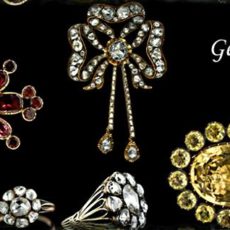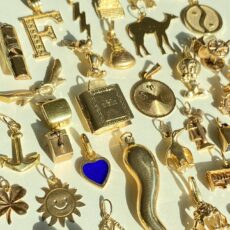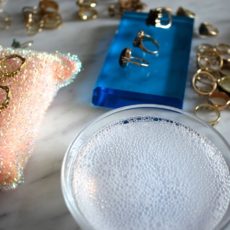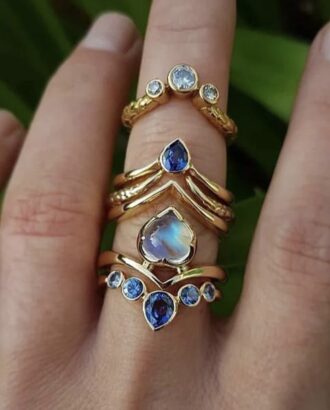

For many fledgling jewelry collectors, figuring out where to begin can be a bit overwhelming, and that’s where Zenobia Morrow comes in. A private jeweler and GIA-certified Graduate Gemologist, Morrow is also the designer behind SevenJune Jewelry, a lively collection of bold gold staples and classic silhouettes studded with diamonds. Through her custom designs and jewelry concierge service, Morrow offers her clients the opportunity to finally see themselves adorned in the way they’ve always dreamed.
We caught up with Morrow to discuss how rap music’s bling aesthetic lead to her curiosity about the jewelry industry, her journey to GIA, and her trail-blazing career as one of the few Black women in the diamond trade.
headshot by Antoinette Brock, used with permission

How did your childhood in Atlanta influence your love for jewelry?
Growing up in Atlanta, I would spend a lot of time with my mom on the weekends going to various antique stores all around the city. You could always find me at the jewelry counter. A lot of those pieces are paste or rhinestone, but there was definitely an immediate attraction to everything sparkly and special.
Although my early introduction to jewelry was at the antique store counter, I was a teen in the early ‘2000s. This was the height of the “Bling Era.” Culturally, we as a people have always been into adornment, but something shifted around that time. This was the era of platinum everything, iced out everything, huge Jacob & Co. watches, and rappers elevating their jewelry with the help of private jewelers like Lorraine Schwartz. So, I was growing up in this culture, and [saw] the way that converged with music and re-defined luxury in a very young and very Black city. I wondered: where were the people who looked like us in the jewelry industry? I think that informed me a lot in my decision when it was finally time to get serious about my diamond education.
You first studied design at Howard University, correct?
Yes, I moved to DC and went to Howard and was studying in their fine arts department—advertising, graphic design. I was in AP art in high school; I’ve always been a painter and just always had an interest in the fine arts.
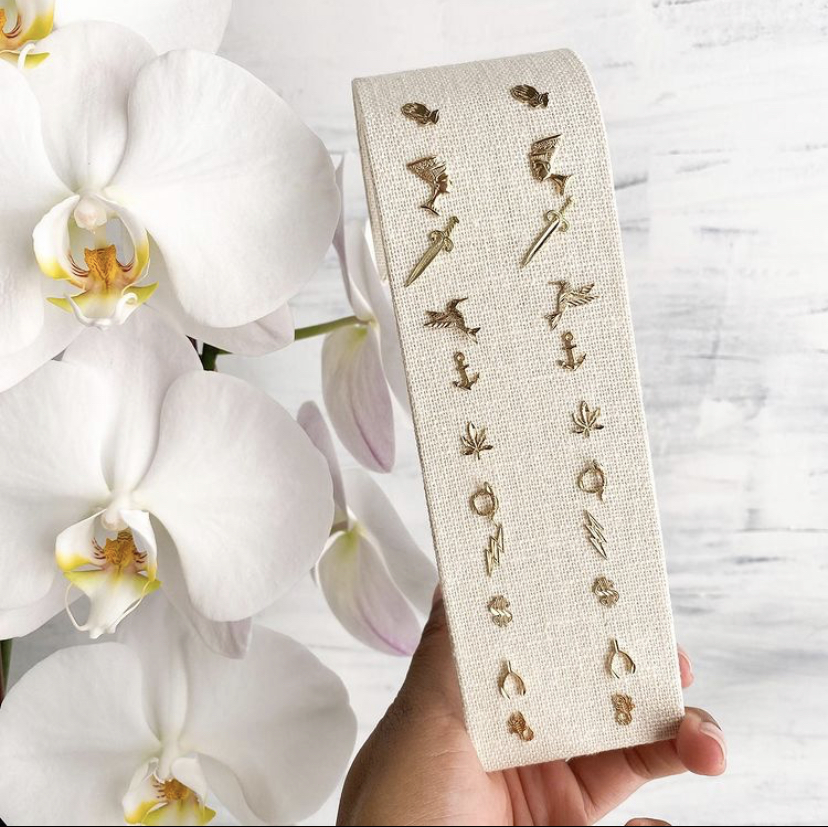
Would you say that your art was primarily in painting or did you explore any other medium?
My artwork was primarily painting. At the time I would do a lot of crafty things. I would make envelopes and pocketbooks out of laminated magazine pages. I would make little zines. I was just always creating something, and using that creativity to keep myself occupied.
Do you still paint?
I still paint—I painted all of the paintings in my apartment. Right now, I’m really getting back into photography. I don’t have as much time as I used to for it, though.
Do you find that there are any connections between your art—your paintings, photography—and the jewelry that you create?
There is a link between my paintings and my jewelry, and that’s really just the aesthetic, because I’m very minimal. I’m minimal in my life, and I’m minimal in my art. I like abstract expressionism and I think that kind of translates into the jewelry, because I’m not fussy with my jewelry, at all. I like to keep the emphasis on the stones. I don’t do a lot of filigree. I don’t do a lot of extras; it’s really about the stones and the materials being the focus.
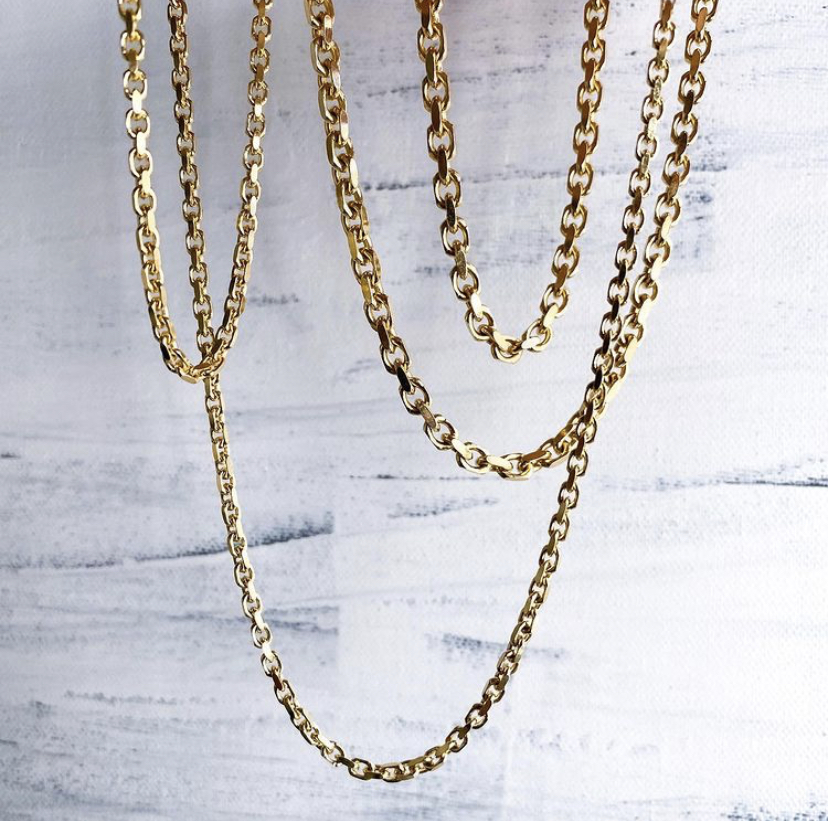
How soon after graduating from Howard did you begin your gemological studies at GIA?
After Howard, I moved to Dubai for a couple of months. That was an incredible experience. It really opened my eyes to a different level of luxury and a different quality of life. They also have a beautiful jewelry culture—there’s a gold market that specializes in high carat gold. Then in 2008, the economy crashed and I ended up back home in Atlanta for a few years before I left to go to the GIA.
What motivated your decision to study gemology?
My interest in gemology came from always having a love of fine jewelry, but not knowing how to enter into a very closed-off, insular world like the fine jewelry business. Outside of my own self-teaching, I didn’t really know anything about stones or diamond grading. I think my mother had a 50-pointer in her engagement ring, but nobody in my family knew anything about jewelry. I wanted to try to figure out the diamond business and the jewelry business, and what that meant. The easiest way for me to do that was to go an actual program and get those credentials, because the credentials speak for you when you don’t have connections in the industry—which I didn’t.
What was your favorite part about your studies at GIA?
The whole process was just a really great time. It’s a graduate program, so everyone there wants to be there and is focused on the work. I studied jewelry design and hand rendering, so that brought in some of my painting background. I did the full Graduate Gemologist program, which starts with diamonds, and then you learn how to identify colored stones. The colored stone part of it was really fun, because there’s such a variety of colored stones that I had never even heard of before. And aside from my studies, I met so many wonderful people at GIA—friends in the business that I still have to this day.
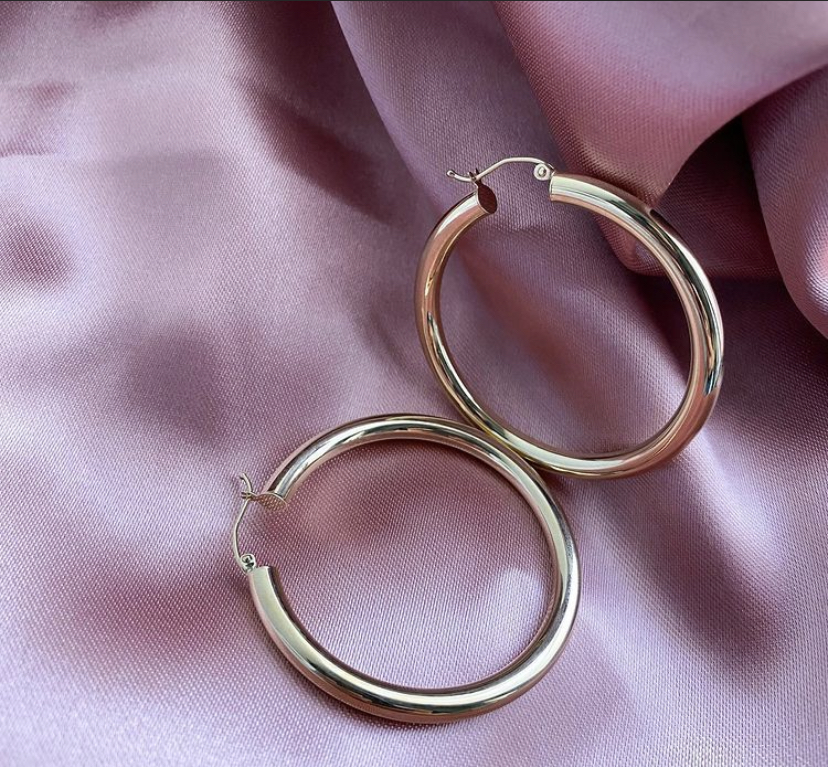
It sounds like you didn’t have the connections before you decided to go to GIA, but the program itself provided those connections.
I definitely I had a lateral network of relationships coming out of GIA. And that was really important because we all were able to help each other.
What was your first job coming out of GIA?
I went straight into the diamond industry. I was really focused not on the jewelry portion of the industry, but straight diamond buying, diamond selling. That’s where I wanted to be. There were no Black people that I could identify in the industry doing that kind of work. That kind of position was very much closed off to us. For women in the industry, they kind of push you into jewelry buying, or they push you into design. Those are the kinds of things you typically see women doing. But you don’t see a lot of female diamond buyers—specifically Black, female diamond buyers. So that’s where I wanted to be. I interviewed with a diamond house in New York called Nader Kash International. He just had really nice goods, and he was focused on fancy shapes. I came in and got the job basically running his operations. At the time it was such a small company; he had just gone out on his own, and he was young as well. I was there for eight years, really building the organizational foundation of his business. We all just grew together. I hired and trained his staff. Some of the people I hired didn’t even know how to use a loupe when they first came on board, and now they’re running the diamond production! It was a lot of team-building, and l just learned so much about the loose diamond trade.

When did you launch SevenJune?
SevenJune came a little later. As I got deeper into the industry, I wanted to have something that was for myself, as a little side project. I had friends who were getting engaged or wanted advice about buying jewelry in general. I decided to put together a little website that I could sell through. From there it blossomed into its own thing. Now everyone is shopping online, so I’ve been able to make a name for myself. But it really just started with people asking me for different things because they knew I worked in the industry, they knew me, and they knew I was a person they could trust.
It’s been since 2018 that I started really focusing on my own business. While I was still at Nader, I was doing this on the side, but I knew eventually that it was something I wanted to have as my own thing.
What’s your most popular piece, and why do you think it’s been so successful?
I started the business with hoops. I had a ton of gold hoops on the site in different sizes, and they were my biggest seller just because that’s what I had. But I would say earrings in general are always a big seller because, while they can be a self-purchase, you can also buy earrings as a gift for someone else. It’s kind of hard to buy a ring or a bracelet online—they might not fit. Earrings always fit. And the trend now is multiple ear piercings, so people always need earrings.
SevenJune offers a concierge service, which may include assistance curating a jewelry collection. What do you take into consideration before helping a client select pieces for their collection?
This is a really interesting part of what I do, the jewelry concierge and the jewelry styling. I have certain clients who have shopped with me for multiple pieces, so I know what they have in their collection and I can really advise them on what to add next. But for people who haven’t shopped with me and just want that assistance, I’ll do a call or an email. I’ll ask them to send me photos of any fine jewelry they have. Once I see what they have, I’m able to think creatively about different ways they can wear what they already own—maybe you have an 18-inch chain that you never wear, but you want an anklet; I can do that for you. Or I can offer pieces to add to your collection that will give the chain a different look. It’s just about being able to offer pieces that work with someone’s lifestyle.
For people who are starting straight from scratch, that’s a really cool opportunity because I get to ask them about their style icons. How do you want to feel in your jewelry? I ask questions that will give me a sense of their lifestyle and who they want to be. So much of what we project to the world is costuming. What do you want to look like? Whose style do you really love? It could be someone like a Rihanna, who does a ton of layering. Or it might be somebody like Tracee Ellis Ross, who focuses on big statement pieces, but might only wear one or two things at the same time. It could be someone really classic like Meghan Markle, where everything is white diamonds, white gold. It just really depends on each individual, how they want to feel, and what they want to project.

I like what you said about how a lot of what we wear and what we project to the world is costuming. I’ve never really thought of it in that way, but it’s true.
It is! You leave your house, and you step out into the world, and you’re projecting how you want to be treated, how you want to be viewed. That might be a little different from who you are at home. It’s kind of like an armor that we put on.
It makes me wonder: what do you wish to project to the world with the jewelry you wear every day?
My thing is: I’m just trying to have my look together [laughs]. I am also a person who lives in my jewelry. I need pieces that are durable. I like a chunky chain. My life is very go-go-go, and I need jewelry that I don’t have to take off all the time. I need pieces that coordinate so I look well put-together. When you’re working really hard, you can feel and look a bit frazzled. So I need pieces that are easy to wear and look effortless.
Have you experienced any changes in your business since the pandemic began?
Definitely. Last summer was very busy, actually. I think with people not being able to travel, they had a little bit more expendable income. And even though you weren’t going out, you maybe wanted something that made you feel better about being at home, or made you feel a little more dressy in your sweatpants.
I also had a nice push based on the renewed interest in buying Black. That really helped my business, having mainstream bloggers and publications looking to recommend Black jewelers and putting my name out there.
That actually leads right into my next question, which was whether you’d noticed any increased support. So has that support remained consistent?
It’s kind of hard to tell. Business has been good, but I don’t know for sure if that’s because of the pandemic, or because of the Black Lives Matter movement. Everything was happening at the same time. That renewed interest is always good, although I would say my primary customer is from my community. My community has been supporting me since I started. That’s really the focus of my business.
I appreciate that.
That doesn’t change, right? I’m making jewelry for us, and I’m trying to help us live the life that we want. I want us to have heirlooms for our families. Anything outside of that is great, and I’m super happy for it. But my community has always supported me.

Do you have any advice for anyone who may be interested in entering the fine jewelry industry?
My advice would just be to research and try to build that lateral community of people within the industry. Issa Rae is the person who I first heard say this; she said we always look for mentors who are making it in the business, and who are where we want to be. But we forget about our peers. Lateral relationships are really what’s going to help you and what’s going to be important to you. I couldn’t do what I’m doing now without my friends in the industry. We were all trying to make something happen for ourselves at the same time, so we were able to teach each other what we knew, and help each other, and that is just as important as having a mentor.
Are you working on anything new?
I think this year I actually want to bring more of my own ideas to life when it comes to designing. Currently, the design aspect of my business is pretty much relegated to bridal, but I would like to focus on some of my own ideas in other design areas.

